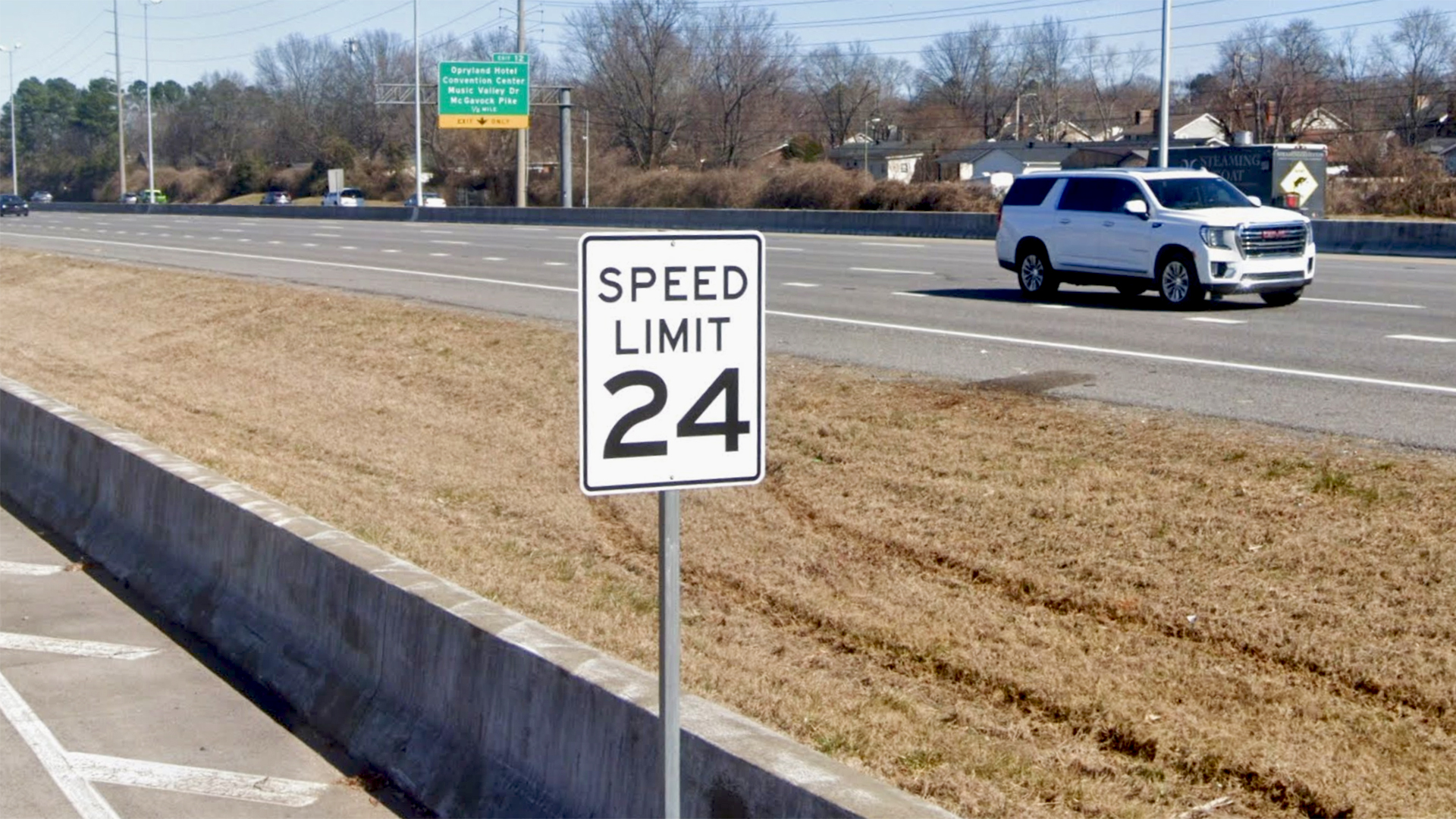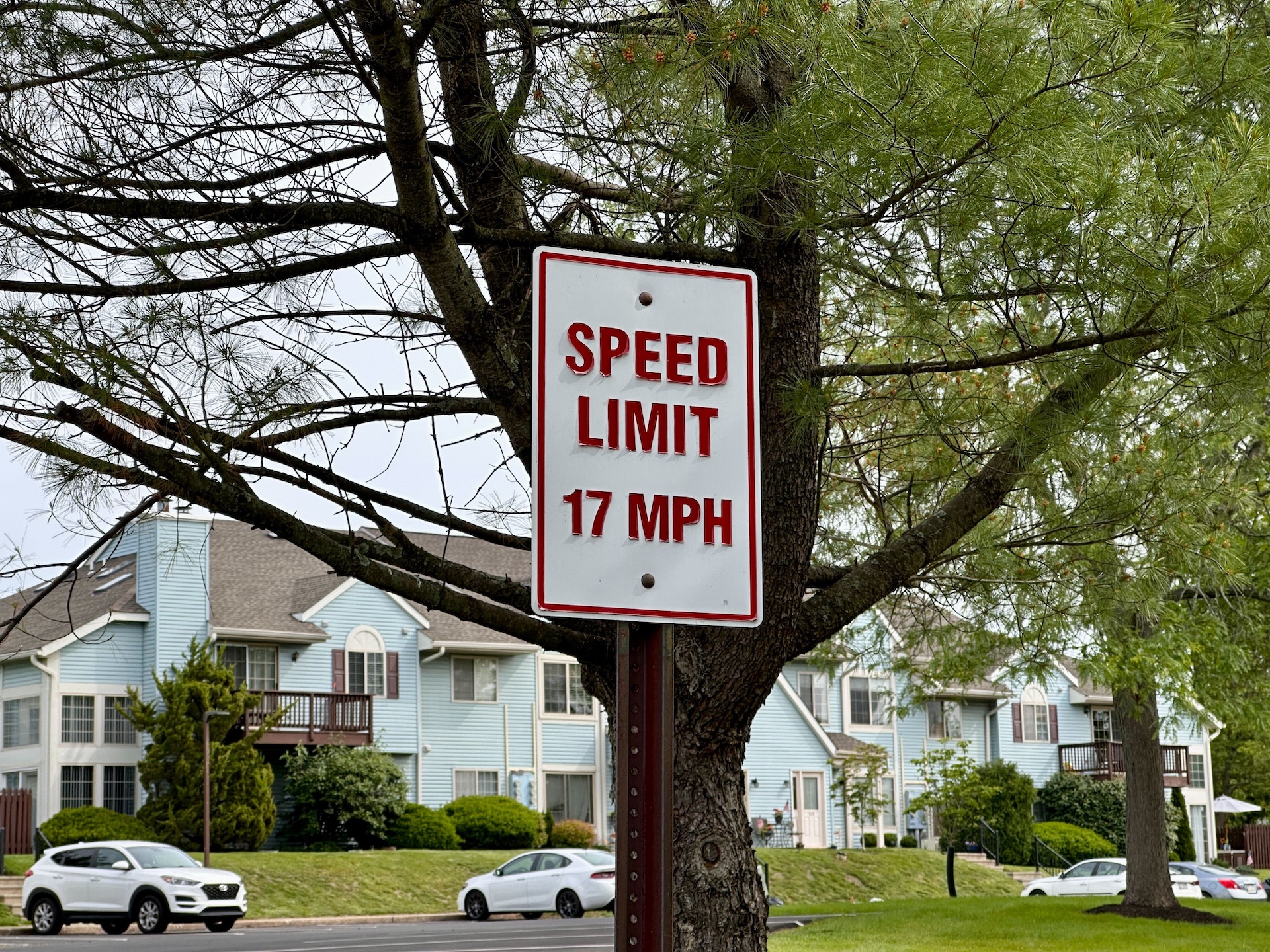
The vast majority of the speed limits enforced across the nation are multiples of five or 10. That’s handy, because for a long time, cars were only equipped with speedometers that displayed multiples of five or 10. Standardization helped streamline our infrastructure, too, but anything goes when we’re talking about private property. That’s why some roads, including one in Tennessee, have unusual speed limits.
Head over to Nashville, take Opry Mills Drive toward the Opry Mills Mall, and you’ll see an unusual sign that reads “SPEED LIMIT 24 MPH.” That’s oddly specific. Many places cap your speed at 25 mph in residential areas, and 20 mph signs are common in school zones, but we’ve never seen a 24-mph speed limit sign before. We haven’t seen the sign in person, but on Google Maps, it looks pretty much like the millions of street signs scattered across the country—right down to the size and the font. The sign happens to be located at the edge of a parking lot, so perhaps the unique speed limit has something to do with falling under the jurisdiction of private property rather than state property.
Property owners don’t have to follow the policies set by a government-run transportation department, so they can set their own speed limits if they see fit. Legally, you can likely enforce a 24-mph (or, hell, a 74-mph) speed limit in your driveway. You can put up a “no passing” sign or a “no hitchhiking” sign, if you get a kick out of it. You can give it a street name, too. It’s your house, your rules. The main difference between you and the people who own the road that’s limited to 24 mph is that your driveway probably isn’t long enough to hit 24 mph on. The entity that owns Opry Mills Drive just happens to own a piece of property that’s an actual road, so it can have more fun with signs.

The trade-off is that the 24-mph speed may be more difficult to enforce than a speed limit on a state-owned road. We doubt a Tennessee Highway Patrol officer can give you a ticket for going 27 on privately-owned Opry Mills Drive’s 24-mph zone. However, this takes us deeper down the private property rabbit hole: The person or company who owns the road could hire a private agency to pull over speeding drivers.
We’re not the only ones who have noticed this sign. It has confused people on Reddit numerous times over the past few years, and it has appeared in several Facebook groups. So, what’s the point? While this is pure speculation, we’re betting the 24-mph limit was set because the sign is a great way to get drivers to pay attention to their speed. The thinking might be that, if you see a 25-mph sign, you’ll forget it a half-second later and keep driving. If you see a 24-mph sign, though, it’ll likely catch you off guard, and you might look at the speedometer.

A The Drive staffer encountered a similar situation in their own neighborhood, where their complex’s speed limit is specifically set at 17 mph. For some reason, that appears even more odd, as most residential parking areas are typically set at 15 mph—or even 10 if they’re leaning on the stricter side. Seventeen is random and can seem a bit speedy in areas where people are constantly pulling in and out of parking spots on both sides of the road.
It works, too—at least until people get used to it. We wouldn’t be writing about a speed limit sign pegged near a mall somewhere on the outskirts of Nashville if it read “25.” And, if your car features a digital speedometer, you can go exactly 24 mph without having to guess how far below the “25” mark the needle needs to be.
Got tips? Send ’em to [email protected]
